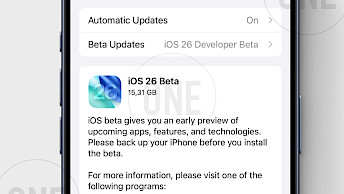Educational Apps as a Tool for Student Self-Education

Educational apps are changing how learners pick up new concepts. They offer quick lessons, easy navigation, and tools for practice that anyone can access. Some ask, is speedypaper legit for writing help, then read in scamfighter review to see if it meets their standards in a crunch.
By using various apps, learners gain control of their study routine and progress at their own speed. These resources can spark a love for learning while boosting the skills needed to succeed. People no longer rely on old study aids that lack interactive features.
A phone or tablet now holds endless lessons and fun quizzes. This freedom to learn on personal terms can reduce stress and raise curiosity. It also shows how technology lets students shape their own path. From solving math puzzles to exploring grammar rules, each app offers a chance to grow. The more students engage with these tools, the better they become at self-directed study. They gain both confidence and valuable knowledge.
Why Students Benefit from Educational Apps
Educational apps let students learn any time, anywhere. By using short lessons, they fit into busy schedules. Many apps include games, mini-quizzes, or story-driven tasks that keep young minds active. This method helps students recall facts with less boredom. Some platforms also deliver personalized feedback, so each learner can see progress moments after finishing a module.
That sense of immediate progress makes self-study more exciting. Students no longer need a physical tutor or large textbooks on hand. Instead, a phone offers quizzes, video lessons, and helpful tips all in one place. The broad variety of apps covers topics from art history to coding, so there's something for every interest. Such variety encourages kids to explore new fields without feeling pushed.
By selecting tools that match their pace, students keep from feeling overwhelmed. They can also revisit topics to master them instead of rushing ahead. This freedom fosters ownership of study time and deeper learning. These benefits help students flourish in modern academics.
Top Features to Look For
Apps that provide variety and engagement stand out. Look for clear instructions, colorful graphics, and structured lessons. A solid app will present step-by-step activities that build on earlier material.
Such organization gives learners confidence to keep exploring new topics. Some apps track progress with charts or badges. These small rewards can always make students eager to practice more.
Another feature to consider is social interaction. Some tools let users collaborate, compete in friendly challenges, or share accomplishments with friends. This kind of support network can motivate students to push harder. It’s also great if the app offers offline access. That way, learning doesn’t stop when internet is limited. Another valuable feature is guidance from reliable sources.
When content is developed by expert educators, it tends to be accurate and thorough. A built-in help option or FAQ can be a lifesaver during tricky moments. By picking apps with these features, students can enrich their knowledge in a fun and meaningful way.
Tips for Using Apps Independently
Successful self-education depends on planning and discipline. Students should set goals before opening any app. By knowing what they aim to learn, they focus on the most helpful material. It’s wise to keep study sessions short and consistent. For instance, 20 minutes of math practice each day can add up quickly. Another tip is to evaluate an app’s structure.
If it includes practice tests, use them to measure growth and identify weak areas. When confusion strikes, students can search for explanations within the app or look elsewhere. Sometimes, combining two or three apps offers a fuller view of a subject.
It also prevents boredom from using the same resources all the time. Keeping track of daily or weekly progress helps maintain motivation. Students might note improvements in a journal or app-based scoreboard. By seeing steady growth, they feel pride in their work. Over time, this system builds strong study habits that last well beyond the classroom. Weeks of persistence pays.
Looking Ahead: The Future of Educational Apps
Educational apps will continue to grow as technology advances. Many developers focus on adaptive learning, which tailors lessons to each user’s pace. This approach helps students spend extra time on harder topics.
Virtual reality and augmented reality are also set to make lessons more lifelike. These tools can transport students into historic sites or far-off ecosystems without leaving home. Artificial intelligence might soon offer real-time tutoring or voice-based assistance. By embracing these changes, learners can remain engaged and curious about many subjects.
Parents and teachers can also guide students by suggesting apps that blend fun with real skill-building. Regular updates keep content fresh and aligned with new curricula. Over time, these innovations could reduce educational barriers around the globe. While technology isn’t perfect, it can fix some gaps in traditional learning. For students who enjoy self-paced study, there’s no shortage of choices. As apps refine their offerings, students will have even more ways to grow and thrive. They remain unstoppable.





